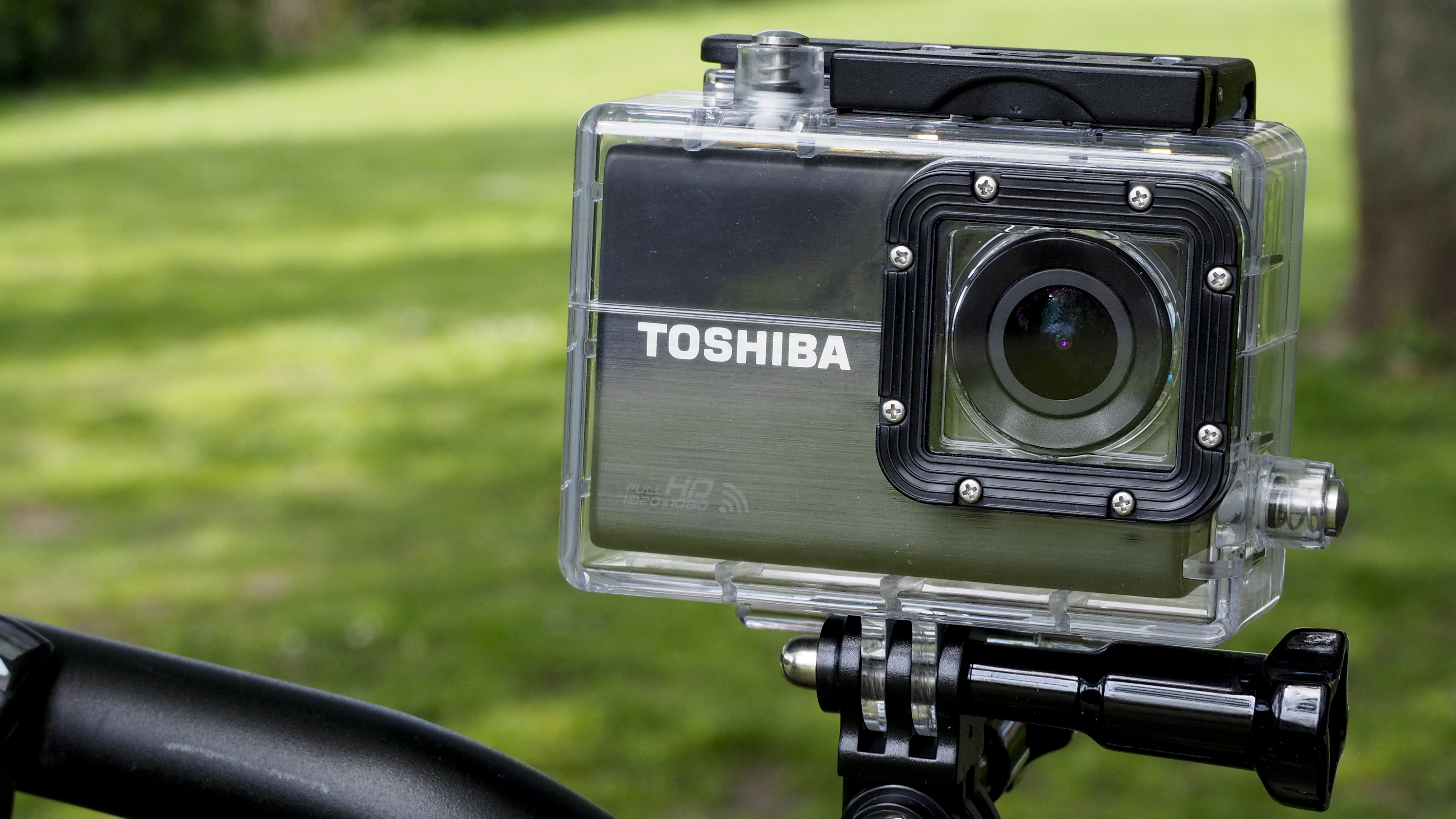TechRadar Verdict
Toshiba has put together a pretty enticing package that offers decent value for money. GoPro Hero3+ videos look a little better, but the X-Sports output comes very close and the Toshiba camera costs a lot less.
Pros
- +
Remote control supplied
- +
Wi-Fi built-in
- +
LCD built-in
Cons
- -
Buttons unresponsive when used in case
- -
Battery life limited
- -
Screen hard to see in bright light
Why you can trust TechRadar
An action camera has become an essential accessory for extreme sports enthusiasts and GoPro has been at the forefront of this movement. So much so, that the word GoPro is used as both a verb and a noun regardless of the make or model of action camera being used.
Naturally, other manufacturers have been keen to get involved and Toshiba is one of the most recent to join the fray with its Camileo X-Sports.
Toshiba may have drawn on its extensive experience of producing video cameras for the X-Sports, but it has opted to use a very GoPro-like design.
Secured inside its box-like housing, the Camileo X-Sports is waterproof down to 60m, making it a good choice for divers as well as those who conduct their sports on the water surface.
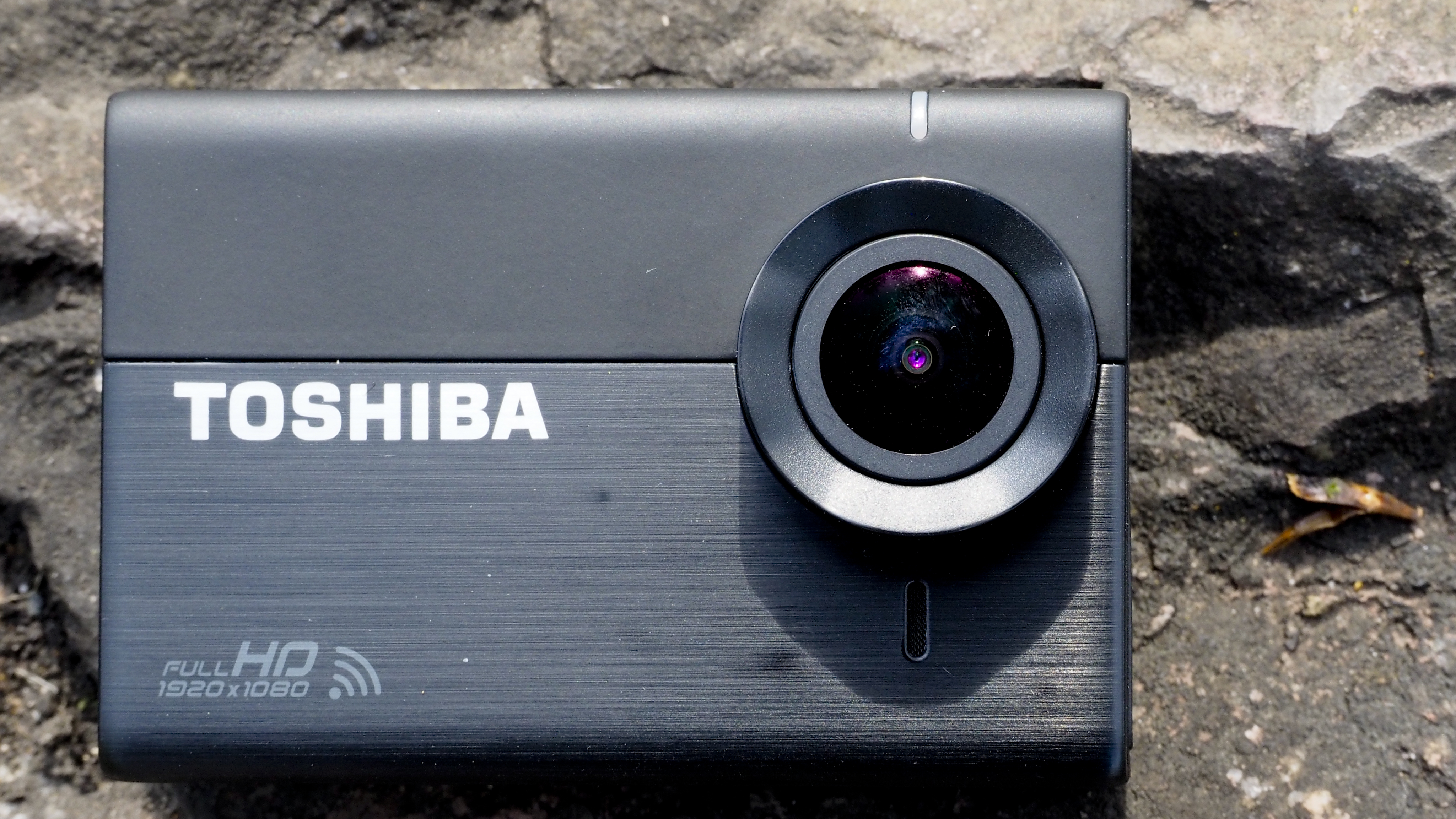
Inside the X-Sports is a 1/2.3-inch 12-million-pixel CMOS sensor behind a 2.97mm f/2.8 lens with an effective focal length of 16.7mm. Like other action cameras, this means the Camileo X-Sports has an ultra-wide angle of view, so it can used very close to the action. Supplementing this is a 10X digital zoom, which could be useful when the action is further away.
On the back of the camera is a 2-inch 320x240-dot (76,800-dot) LCD screen. Though small and low-resolution by still-camera standards, this is something of a bonus for actions cams. A screen is an optional accessory for GoPros.

Movies may be shot in Full HD (1080p) at 60fps, 720p at 120fps, 1600x1200p at 60fps, 960p at 60fps, 848x480 at 240fps and 480p at 30fps. Exposure is controlled automatically, with exposure compensation available to +/-2Ev in 1Ev steps. Sensitivity can be set to Automatic or set manually to ISO 100-6400 in 1Ev steps. Metering can also be set to spot instead of the standard mode.
Although the Camileo is likely to be used mostly for shooting videos, it can also shoot 12Mp stills. In Photo mode it takes photographs on demand, but in Photo Burst mode it will take shots at a rate of 3, 5, 10 or 30 per second after the record button is pressed. It's possible to shoot at 30fps for 1, 2 or 3 seconds, but image size drops to 5Mp.
Meanwhile in Timelapse mode, the camera takes a sequence of photographs at a pre-defined interval (0.5, 1, 2, 5, 10, 30 or 60 seconds).
There's also a Simultaneous Video and Photo mode in which the camera shoots Full HD movies while capturing still images at a fixed interval of 5, 10, 30 or 60 seconds. Still-image resolution drops to 8Mp and video framerate falls to 30fps in this mode, but it seems a good compromise. It's also possible to shoot video at 60fps in the same mode, but still-image resolution drops to just 2Mp.
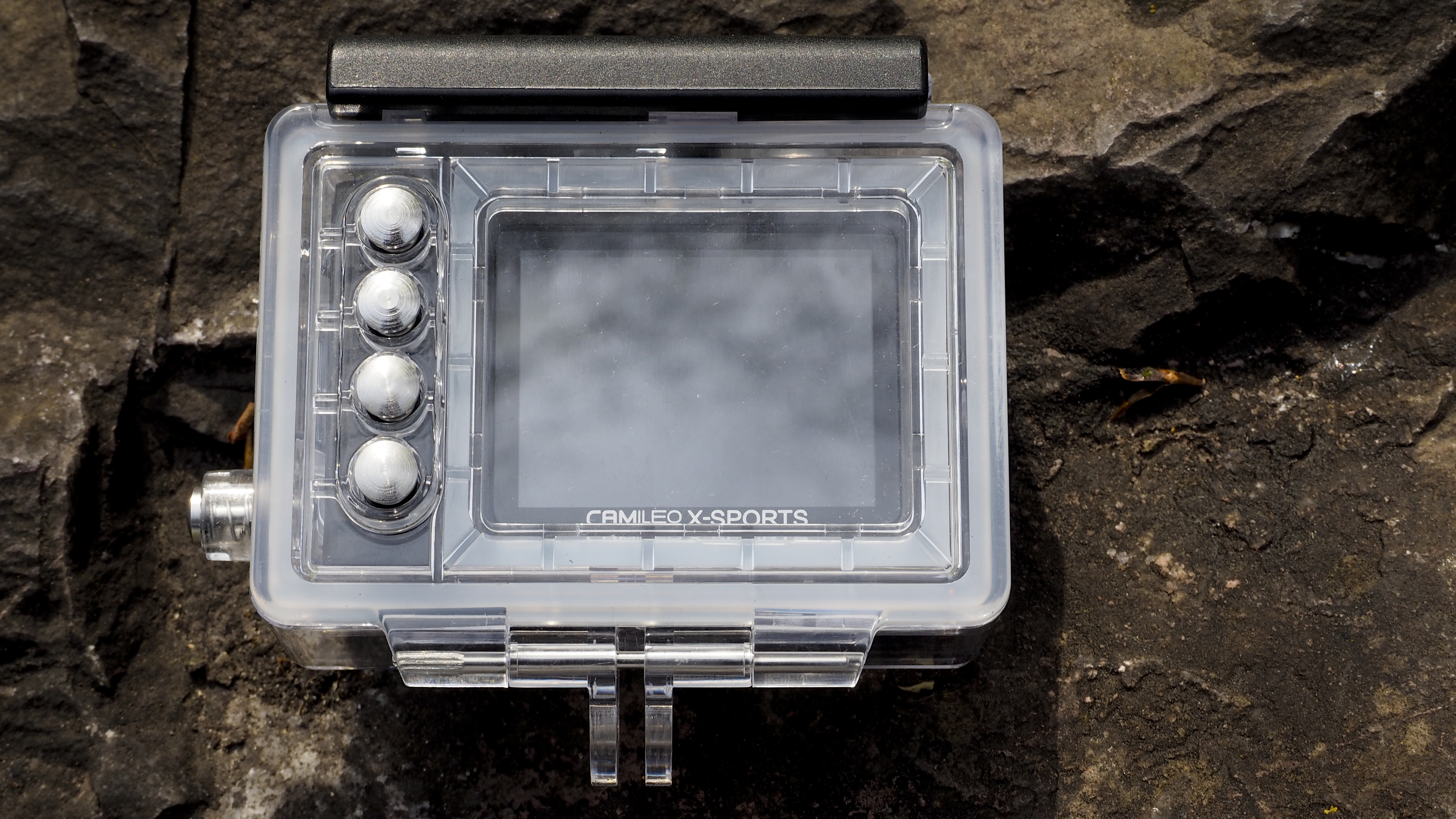
The X-Sports has a built-in Wi-Fi system to allow the camera to connect with a smartphone via Toshiba's Wi-Fi Connect app. This enables scenes to be composed on the phone screen and then shared. Helpfully, simultaneously captured lower resolution (WVGA) video is available for sharing, but transfer is still time consuming.
Another added extra supplied with the Camileo X-Sports is the wireless remote. This has a wrist strap and allows the shooting mode to be changed and recording to be stopped and started.
Action cams are intended for use during extreme sports and they need to be attached to a huge range of items, from helmets to surfbords. Helpfully, Toshiba supplies a large collection of mounts in the box, including a Flat Clip Mount, Flat Adhesive Mount, Curved Adhesive Mount, Side Mount, Bike Mount, Vented Helmet Mount, Surfboard Mount and Tripod Mount.
Build and handling
At 73x49.5x29.5mm the X-Sports is quite a bit larger than the GoPro Hero3+ and feels somewhat bulky once it's inside the waterproof housing. Fortunately, once it's on a helmet or chest-mount you don't really notice it.
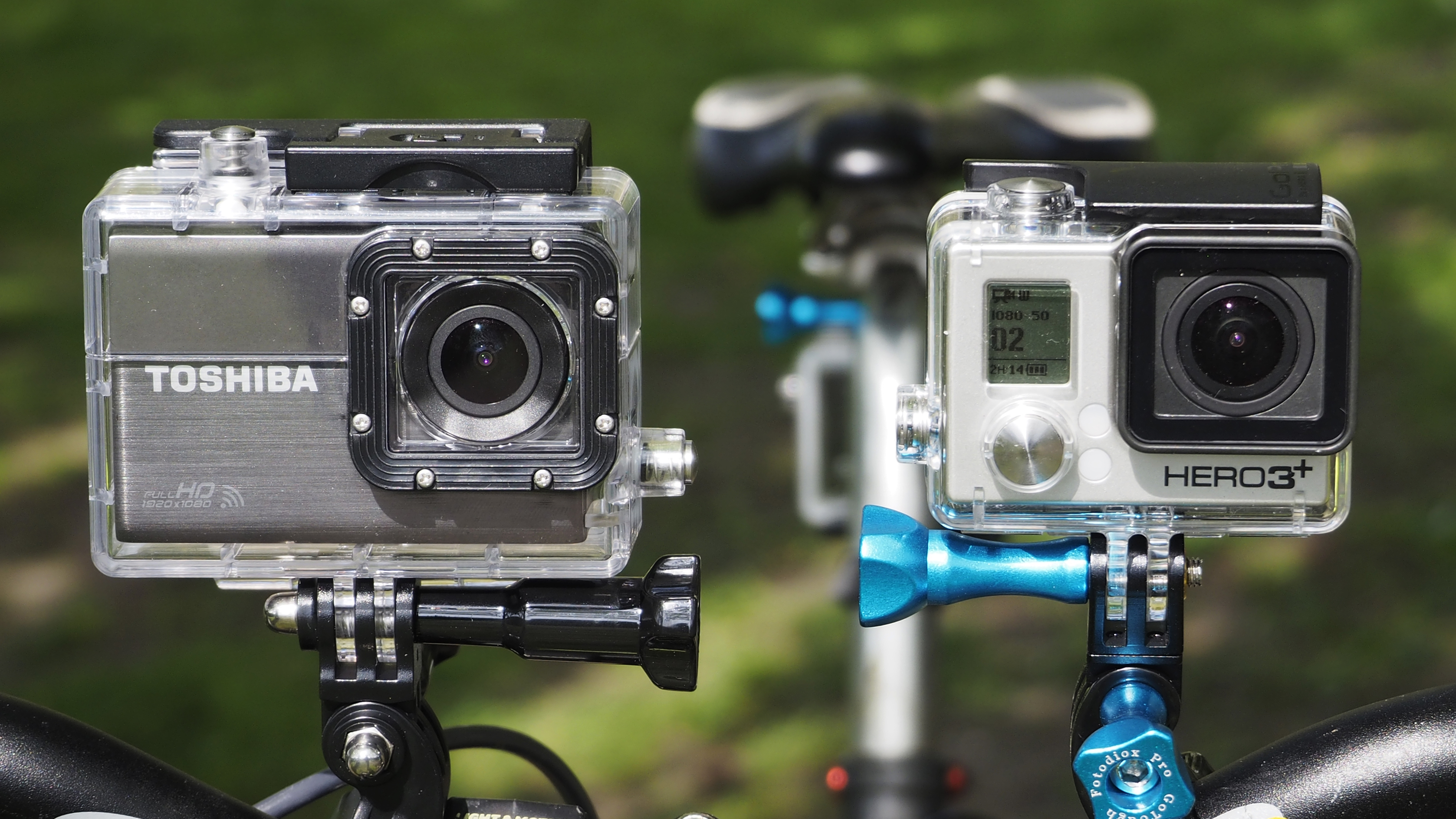
A standard tripod bush is present and can be used outside of the waterproof housing, but it's unlikely you'll want to use the camera without the case on.
Operation is pretty straightforward using a small collection of buttons, including one on the top to stop and start recording. On the left side is the power button, while on the back there are four buttons to the left of the LCD screen.
The bottom button gives access to the menu, which is navigated and selected using the buttons above. Toggling through the options and making selections is simple enough, but Toshiba's Wi-Fi Connect app makes the process a little clearer.
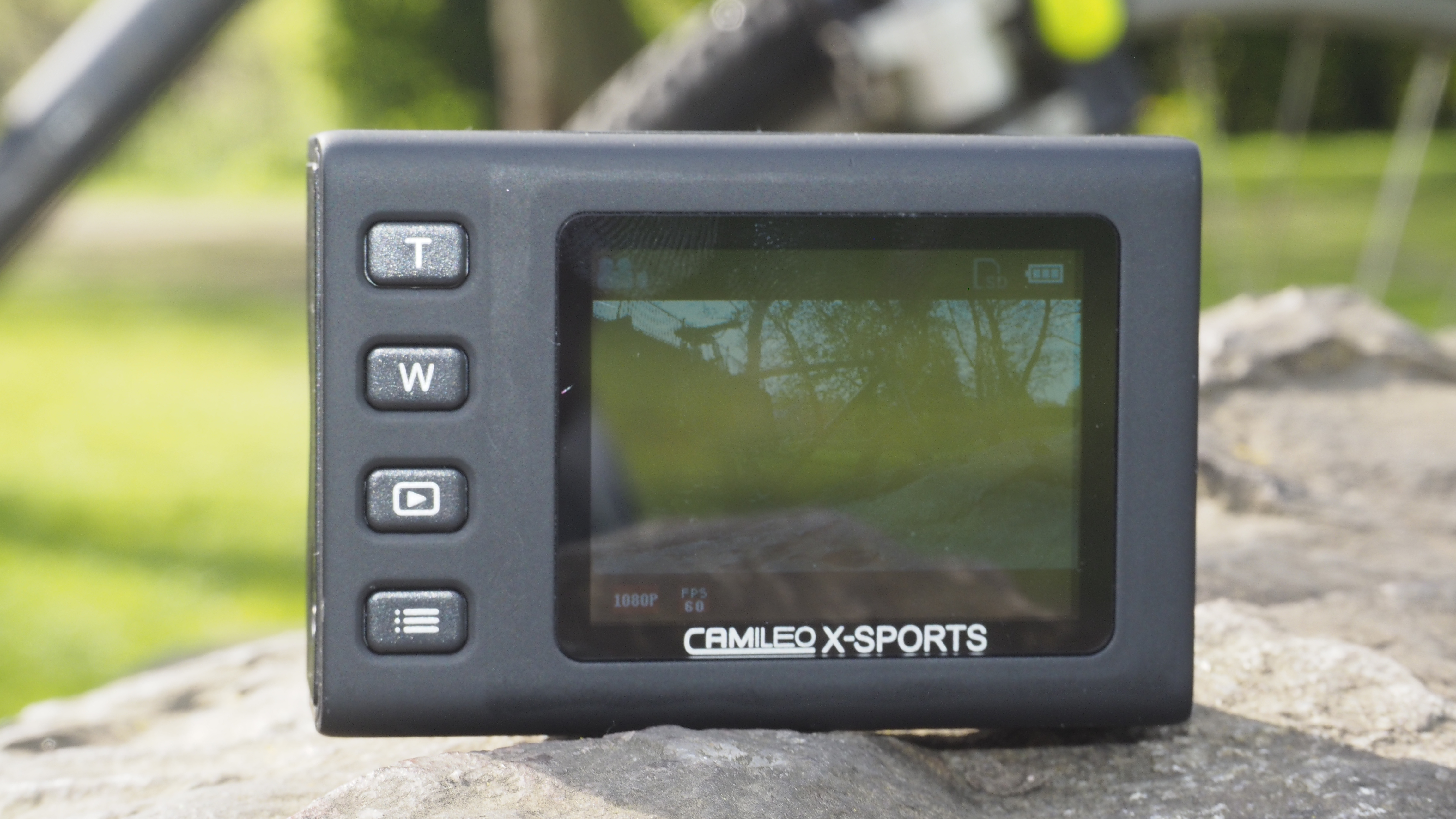
Connecting the camera to a smartphone via the built-in Wi-Fi system is easy. The camera's network is activated via the menu and shows up on your phone's available Wi-Fi connections list as Camileo X-SPORTS. Once a connection has been made the light on top of the camera flashes blue and Toshiba's Wi-Fi Connect app can then be used to control the camera and compose scenes on the phone screen.
Although operating the X-Sports is easy in theory, the waterproof housing can hamper things. Button presses need to be very firm and it's advisable to double-check that recording has started when the on-camera button is used. However, we found it more responsive when the wrist-mounted remote was used.
Obligingly, the remote lights up to indicate activity, blinking red to indicate video mode and blue for photo mode. Alternate red and blue blinks indicate the camera is in simultaneous photo and video mode. The pace of the blinking picks up when recording is started.
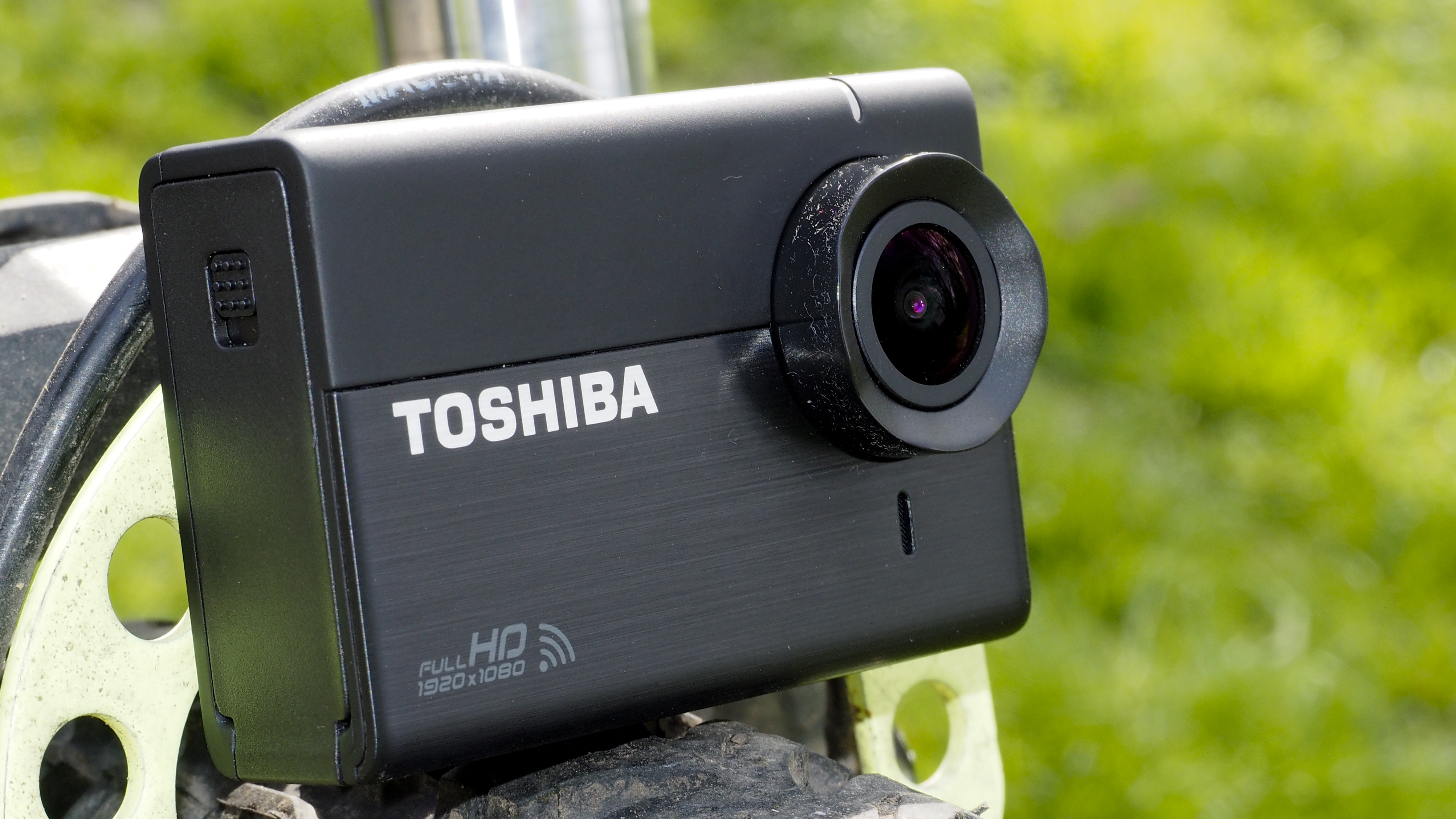
We found the screen quite difficult to see in bright conditions, especially when the camera was inside the housing, so a shielding hand maybe required. On many occasions, however, the screen is only required to check camera alignment.
If the screen proves difficult to see, or is in an awkward position, there's always the option of using a smartphone to view the image. If you use this method, don't forget to turn the Wi-Fi off afterwards (just turning the camera off and on again will do it) to save battery power.
